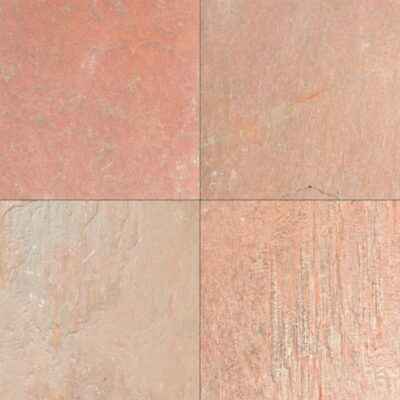Introduction
Limestone, an elegant timeless, and versatile natural stone, has journeyed through time as a witness to human history, architecture, and innovation. From the grandeur of ancient temples to the comfort of modern homes, its rich history and diverse qualities have made it an enduring favorite in the world of construction. In this exploration, we will delve into the historical significance of limestone, trace its geological formation, and uncover the myriad applications that have shaped our built environment.
A Chronicle of Limestone in Architecture and Construction
Limestone’s role in architecture dates back millennia, entwining with the origins of human civilization. Ancient civilizations such as the Egyptians, Greeks, and Romans recognized its aesthetic allure and practical benefits. The Great Pyramid of Giza, one of the Seven Wonders of the Ancient World, stands as a testament to its durability and timeless appeal. The Greeks crafted magnificent columns and sculptures from limestone, exemplifying its malleability under skilled hands.
In the Roman, it became a cornerstone of monumental architecture, with the Colosseum and Pont du Gard bearing witness to its structural prowess. Throughout the Middle Ages and Renaissance, this natural stone continued to grace cathedrals, castles, and palaces, defining the grandeur of European cities. Today, its legacy persists, as architects and designers blend tradition with innovation to create spaces that honor history while embracing modernity.
Geological Formation and Diversity
Limestone’s journey begins beneath the Earth’s surface, where the interplay of geological processes over millions of years results in its formation. Comprising primarily of calcium carbonate, this natural stone originates from the accumulation of organic materials like shells and coral in ancient oceans. Over time, these deposits compact and solidify, giving rise to the unique textures and variations that define limestone.
The diversity of these natural stone types stems from factors such as mineral composition, impurities, and geological conditions during formation. Chalk, for instance, features a fine-grained texture due to its high microscopic shell content. On the other hand, coquina is characterized by its coarse texture, formed from the aggregation of shell fragments.
Limestone’s Enduring Allure
Its allure lies not only in its visual appeal but also in its practical qualities. Its durability and resistance to weathering make it suitable for both interior and exterior use, ensuring that the spaces it adorns stand the test of time. Its natural variations lend character and uniqueness to each application, creating spaces that resonate with authenticity.




Types of Limestone
Its captivating variations stem from its unique geological origins and the interplay of different mineral compositions. Some notable types of limestone include:
- Travertine: Renowned for its porous texture, travertine forms in mineral-rich springs and caves. Its subtle colors, ranging from ivory to beige, create an elegant and inviting aesthetic. Travertine’s popularity in flooring, countertops, and wall cladding reflects its ability to add a touch of sophistication to any space.
- Marble: A metamorphic limestone, marble is characterized by its striking veining patterns and polished surfaces. This luxurious stone has been cherished since ancient times, gracing palaces, sculptures, and interiors. Its elegance shines in bathroom vanities, decorative accents, and even outdoor landscaping.
- Oolitic Limestone: Recognizable by its distinctive spherical grains, oolitic limestone forms in shallow marine environments. Its smooth texture and light hues make it a favorite for both historical and contemporary architecture.
- Chalk Limestone: This soft and fine-grained limestone owes its origins to the remains of tiny marine organisms. It often appears as white cliffs in coastal areas, embodying a sense of tranquility and timelessness.
- Coral Limestone: As a testament to nature’s artistry, coral limestone is composed of coral and shell fragments. It evokes the calming ambiance of coastal landscapes, making it a popular choice for both indoor and outdoor applications.
Applications
Its versatility and aesthetic diversity have led to its integration into various architectural and design projects:
- Monumental Structures: The enduring beauty of this natural stone has adorned iconic structures worldwide. The Taj Mahal’s ethereal white façade is a testament to the elegance of Indian white marble, a type of limestone. The United States Capitol’s stately appearance owes much to the use of this natural stone in its neoclassical design.
- Exquisite Flooring: Its durability and refined appearance make it an ideal flooring material. Whether in a rustic farmhouse kitchen or an upscale hotel lobby, its natural charm enhances the ambiance of any space. Its natural variations in color and pattern lend character to both residential interiors and public spaces.
- Stunning Countertops: Limestone countertops bring a touch of sophistication to kitchens and bathrooms. Their smooth surfaces and subtle colors create an understated elegance that complements various design styles.
- Cathedral and Church Facades: The grandeur of many cathedrals owes its beauty to limestone. The intricately carved facades of Notre Dame Cathedral in Paris and Canterbury Cathedral in England stand as captivating examples of their role in religious architecture.
- Elegant Wall Cladding: Its ability to transform walls into works of art is showcased in both interior and exterior applications. From accent walls in living rooms to façades of grand buildings, it adds depth and character.
- Timeless Architectural Details: Carved limestone details, such as columns, balustrades, and cornices, elevate the aesthetic of buildings. These architectural accents pay homage to classical designs while enhancing modern structures.
- Garden Landscaping: Its connection to the earth makes it a natural choice for garden landscapes. Whether as pathways, retaining walls, or water features, this natural stone seamlessly blends with nature’s beauty.
- Restoration and Conservation: Its compatibility with historical contexts is invaluable in restoration projects. It ensures the preservation of architectural heritage while maintaining visual cohesion.
- Interior Design Statements: From fireplace surrounds to decorative sculptures, its versatility in interior design is unmatched. Its ability to evoke a sense of luxury and timelessness makes it a sought-after choice.
Sustainability and Innovation
In the modern age, limestone continues to evolve, finding new relevance in sustainable construction practices. Its availability and natural abundance contribute to its eco-friendliness, while advancements in quarrying and extraction techniques minimize environmental impact. Its thermal properties contribute to energy efficiency, making it an excellent choice for building envelopes that regulate temperature. Additionally, its longevity reduces the need for frequent replacements, minimizing waste and resource consumption.
Innovations in surface finishes, such as honed, polished, and textured variations, offer designers a spectrum of possibilities to express creativity and achieve desired aesthetics.
Conclusion
Its journey through time in architecture and construction is a testament to its enduring allure, resilience, and adaptability. From ancient wonders to modern marvels, its presence in our built environment enriches our lives and connects us to the legacy of generations past. As we tread upon limestone pavements, admire its intricate carvings, and seek solace in the shelter of its structures, we acknowledge the role this remarkable stone plays in shaping the narrative of human ingenuity, creativity, and architectural magnificence.

















